General
The goal of the Prevention Department is: the prevention of inadvertent and deliberate doping infringements in Dutch sport. The main target groups are: elite athletes, athletes in sports organised outside a club context (fitness training in particular), support staff (principally trainers/coaches, sports doctors and GPs, physiotherapists, dieticians/sport dieticians, sports masseurs, parents) and the general public.
The activities include providing information about doping regulations, the risks of doping, proposing healthy and permissible alternatives for enhancing performance, and efforts to establish or reinforce anti-doping attitudes among athletes and support staff.
The following items are addressed specifically during information meetings for elite athletes: the health risks associated with doping, the rights and obligations of athletes, the prohibited list, the doping control procedure, arrangements for therapeutic use exemptions, the whereabouts system, the risks of dietary supplements and the damage inflicted by doping to the 'spirit of sport', and the 100% Dope Free campaign.
Meetings for support staff cover these issues as well, but also focus on the rights and obligations of support staff, as well as factors that exacerbate or mitigate the risk of doping.
For the fitness training target group, the emphasis is on guest classes during the numerous fitness training courses. These classes deal with the different types of doping, the risks of use, the way the substances work and the side-effects, fact and fiction relating to supplements, doping prevention and the Own Strength campaign.
The Doping Authority's three sites (the site for the organisation as a whole and the 100% Dope Free and Own Strength sites) are important ways of communicating with the various target groups. In addition, elite athletes, fitness trainers and support staff use the telephone and e-mail services of the Doping Infolijn. A fourth website, www.doping.nl, is in English and it was developed in the course of 2011; it will go online in early 2012.
Elite sport
Elite sport campaign 100% Dope Free
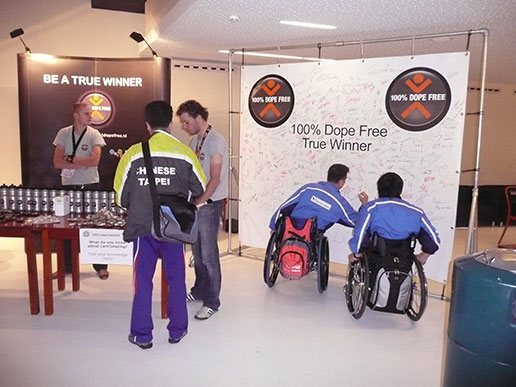
Many existing activities focusing on Dutch elite sport have now been transferred to the elite sport campaign, 100% Dope Free. In addition to providing information, this campaign focuses on changing attitudes and behaviour. The campaign will certainly continue until the end of 2012.
www.100procentdopefree.nl
The website of the campaign plays a central role: all information about the campaign can be found there. The number of unique visitors fell slightly from 82 (in 2010) to 69 a day. The number of page views was 182 a day (2010: 264). Twenty-three news flashes appeared and four newsletters were sent to all the subscribers (numbering approximately 14,000).
100% Dope Free - True Winner
This part of the campaign (which began in December 2007) gives elite and competitive athletes the opportunity to sign an anti-doping statement and to adopt an active stance against doping. Once they have signed the statement, the athletes are sent the gold wristband to symbolise the fact that you are only a true winner if you perform without doping. In 2011, the number of statements increased from more than 20,000 to 23,000.
This part of the programme was developed and implemented in collaboration with the NOC*NSF Athletes Committee. Femke Dekker (rowing), Rutger Smith (athletics), Jokelyn Tienstra (handball), Carl Verheijen (speed skating), Richard Bottram (marathon 365 & Wheel of Energy), Epke Zonderland (gymnastics), Mirjam de Koning-Peper (swimming), Thijs van Valkengoed (swimming) Churandy Martina (athletics) and Marianne Vos (cycling) are the ambassadors for the campaign. On 15 October 2011, Marianne Vos participated on behalf of 100% Dope Free in the talk show Doping, the critical limit organised by VU Connected.
Information meetings
Members of the National Testing Pool are required to attend one Doping Authority information meeting a year. This can be arranged through the sports associations but collaboration is mostly with the Olympic Support Centres. In total, there were 38 information meetings for elite athletes (and up-and-coming athletes) and their immediate support staff.
In 2011, the first steps were taken to providing online information for elite athletes, in part as an alternative for athletes who are unable to attend information meetings because of other obligations. The latest elite sport survey (2010) showed that athletes very much want to be informed digitally. In 2011, 103 athletes went through the online information and appreciation levels were high.
Outreach Events
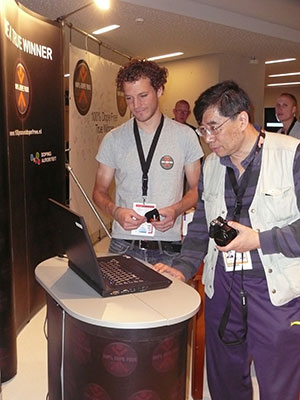
There were five outreach events in 2011. The idea is to target events/competitions, where large groups of athletes (particularly young and talented athletes) and their parents and trainers/coaches are given general information and where they can put questions to the Doping Authority. There is also an opportunity to sign the 100% Dope Free – True Winner statement. By completing the WADA doping quiz, it is possible to win an incentive. Outreach events were organised at: National Indoor Athletics Championships, World Track Cycling Championships, World Table Tennis Championships, EYOF Team Presentation and the ‘Ready’ Paralympics Meeting.
Doping fan booklet
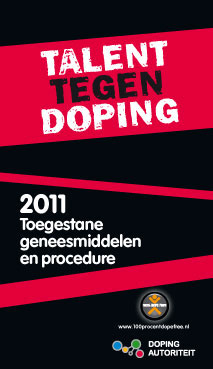
A doping ban booklet appeared again in 2011, this time with the theme Talent against Doping. It contains the main doping rules, the WADA prohibited list, the list of common approved medicines (classified according to symptoms), and an explanation of the doping control procedure. In early January, when the prohibited list came into force, the fan booklet was sent to all A and B athletes and 'High Potentials'. In addition, all sports doctors, the members of the TUE committee and the Doping Authority's press contacts received a fan booklet. Elite sport organisations and Olympic Support Centres have also been asked to distribute the booklet to athletes and support staff. The doping fan booklet was also handed out during information meetings, outreach events and at fairs. DCOs take booklets with them that they can hand out to athletes during controls. The doping fan booklet can also be purchased separately.
Articles
A topical doping subject is discussed every month in the NOC*NSF elite sport magazine Lopend Vuur.
100% Dope Free videos
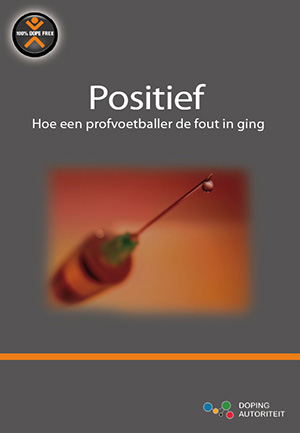
A video was produced in 2011 about a footballer who was found positive. In the video, he tells his story, explains why he finally resorted to doping, and describes the impact on himself and the people around him. The video is used only at information meetings so that there is opportunity for explanation and discussion.
Advertisements
The 'Be True' advert was used to generate publicity for the campaign. It calls on athletes to sign the 100% Dope Free – True Winner statement and to support the campaign. This advertisement was published in 2011 in various sports magazines and posted on a number of websites, including those of sports associations.
Meeting of sports associations
A meeting was organised for the second time for the staff of sports associations (Together against doping). It took place on 11 October in Nieuwegein and was attended by 32 people from 23 associations. The aim was to improve collaboration and, in that way, to educate as many elite athletes (or up-and-coming athletes) as possible before they undergo their first doping control. The meeting concluded with the video of a footballer who was found positive, after which he discussed details in a personal interview. In addition, a group of association directors and staff made a working visit to the doping laboratory in Ghent.
Developments
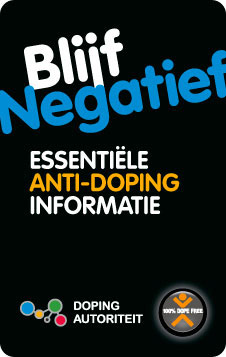
Doping information activities are also focusing increasingly on talented athletes (International Talent, Dutch Talent, High Potentials). So work started on a talent leaflet in 2011. It will be published in 2012.
A compact leaflet was also developed in 2011 under the title: Stay Negative! It will be published in March 2012. The aim of the leaflet is to inform large groups of athletes who may qualify for doping controls about the main risks that can lead to inadvertent doping infringements. The main distribution channel will be through the sports associations.
Therapeutic Use Exemption Committee (TUE committee)
2011 saw a relaxation in the regulations relating to therapeutic use exemptions. The 'notification procedure' was no longer considered to be necessary after 1 January 2011, and this lightened the burden for both the athletes and the TUE committee.
Ultimately, exemptions were granted in 111 cases. Eight applications were turned down.
| 2009 | 2010 | 2011 | |
|---|---|---|---|
| Granted | 278 | 140 | 111 |
| Rejected | 48 (14,7%) | 12 (7,9%) | 8 (6,7%) |
For the first time, most applications were not related to the use of beta2 agonists (29%, as opposed to 36% in 2010). Most requests in 2011 related to the use of methylphenidate (35%; 23% in 2010). Other medication for which dispensation was often granted included prednisone (11%, 7% in 2010) and insulin (5%, 7% in 2010). Taken as a whole, the applications came from 31 different sports associations, three more than in 2010. Most applications this year were, once again, from the Royal Dutch Cycling Union (18%), followed by the Royal Netherlands Swimming Association (11%) and the Royal Netherlands Skating Association (8%). The top three was therefore exactly the same as in 2010.
Sports organised outside a club context
Own Strength campaign
The main target group in sports organised on alternative lines consists of: visitors to fitness centres and their immediate circles (particularly fitness instructors). The Own Strength campaign was developed for this group. The campaign material includes: a poster for men and women, an Own Strength jar (in different sizes), a display with leaflets, a T-shirt, a water bottle and a DVD. The campaign was promoted in a range of fitness magazines, during educational activities and at the annual Fitness & Health Benelux fair, for example with a promotional leaflet. In late 2011, 141 fitness centres were participating in the campaign.
www.eigenkracht.nl
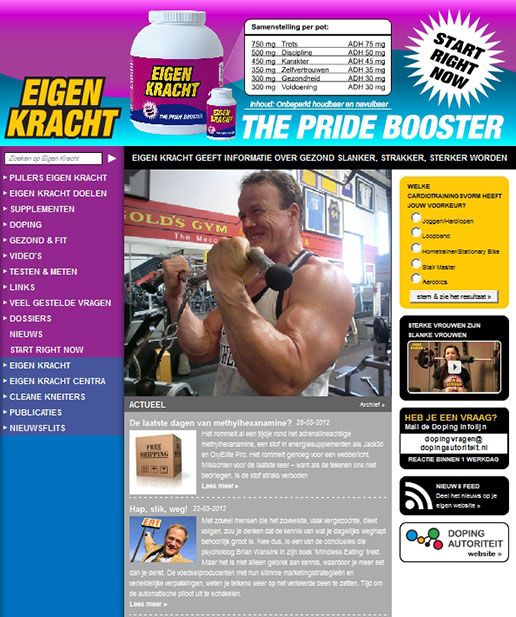
The Own Strength (Eigen Kracht) site plays a central role in the campaign. The site was completely overhauled, updated and extended in late 2010. Alongside text, videos are being used more and more. In addition, there are four full annual programmes for four different training goals. The site has also been made more user-friendly by classifying information under headings such as training, diet, supplements, doping, health etc. This makes it easier for visitors to find extensive information about specific topics.
The site specifically targets athletes/cosmetic athletes in fitness centres. It provides objective and practical information about how to build up muscle mass cleanly and effectively, and about sound ways of losing weight. There is also objective information about various types of listed prohibited substances and the side-effects, as well as an extensive presentation of the Own Strength campaign.
In 2011, a total of 55 factual news reports were posted on the site. They were written by two external experts (journalists or specific experts) from the fitness/body-building branch and by our own prevention officers.
The total number of page views in 2011 was 859,629 (2010: 297,474), almost three times the number in 2010. The average number of page views a day for 2011 was 2,336. The number of unique visitors in 2011 was 323,343, an average of 886 unique visitors a day.
Videos
Own Strength uses videos more and more. Ten instruction and expert opinion films were produced in 2011. All the videos were posted on the site.
Fitness courses
In 2011, the Own Strength campaign included about 13 guest lessons at numerous educational institutes and private fitness courses. The Own Strength water bottle was handed out during those lessons to trainee fitness instructors.
Clean Hunks
Clean Hunks are fitness athletes/body builders who have demonstrated that you can build up an impressive physique without dope. Two more joined the ranks in 2011 and so there are now twelve in total. They are all on the site, which includes background stories and photos. Others can follow their example and join the campaign.
Articles
Since 1997, Own Strength has had a regular column in the popular bodybuilding magazine Sport & Fitness Magazine (with a circulation of 13,000, and 4 issues annually since 2011). Acting under its own editorial responsibility, the Doping Authority provides objective information in each issue about prohibited substances and related matters. All the published articles are also posted on www.eigenkracht.nl so that the information remains available. Two articles were published in 2011. After a delay resulting from the takeover of the magazine, the series of articles continued. Sport & Fitness will be appearing six times a year from 2012 onwards.
An article was also published in Fitness Expert and contributions have been made to other magazines.
Advertisements
The poster for men from the Own Strength campaign was published in two issues of Sport & Fitness Magazine. Advertisements have also appeared in a magazine for the police.
Steroids clinic
The Steroids Clinic moved from the VU University of Amsterdam Medical Centre in Amsterdam to the Kennemergasthuis hospital in Haarlem. ‘Cosmetic athletes’ with medical complaints or questions are regularly referred to this steroids clinic. It is also a standard topic of our articles in Sports & Fitness Magazine.
Collaboration with the fitness branch
In 2011, there were initiatives to further collaboration with the fitness branch. For example, Own Strength organised a presentation for the board of Fitvak, and the Doping Authority and Fitvak signed an agreement to collaborate more and in more concrete ways to reduce doping in fitness centres.
In the context of a European project Fitness against doping, we teamed up with the Europe Health and Fitness Association, the coordinator of this project. It has also been agreed with the EHFA that there will be more collaboration with the aim of establishing a better doping prevention policy.
In the context of a masters study in Criminology, we have collaborated on research with Katinka van de Ven. She studied illegal trafficking in non-organised sports in the Netherlands. She collected some information as a visitor to fitness centres. Her dissertation appeared in late 2011.
Book: Doping, the sober facts
The booklet Drug Info, doping. Hard facts about doping appeared in 2000. Given the continued limited availability of the booklet – and the fact that it is somewhat outdated – work has started on a new improved edition. There was extensive research and a lot of writing in 2011 on this new book. It will be published in 2012.
Participation in European project Strategy for Stopping Steroids
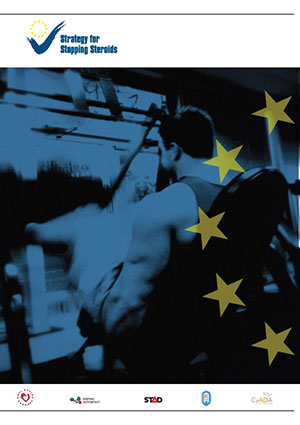
At the initiative of Anti-Doping Denmark, a partnership involving five countries (Denmark, Sweden, Cyprus, Poland and the Netherlands) obtained a project subsidy from the European Commission. It relates to a project bringing together knowledge and experience from different countries with the aim of optimising the strategy to reduce the use of steroids. The first meeting with the project partners in Copenhagen was organised in April. The second was in Cyprus in October. The result will be a congress that is planned for 19 and 20 March 2012. There will also be an extensive report in several languages.
Support staff
In addition to the focus on athletes, there has been an increasing emphasis in recent years on athlete support staff. They can play an important role in both a positive and negative sense. That is why energy will be invested in this group in the years to come, with the trainer/coach being given a prominent place. In addition, sports medics and paramedics also occupy important positions.
Brochure for Support Staff
The brochure, entitled About support: how parents, trainers, coaches and other support staff can contribute to dope-free sports was distributed widely again at information meetings, training and refresher training and outreach events, and it was also included with the magazine NLCoach.
Trainer/coach courses
In collaboration with the Academy for Sports Administrators and a number of sports associations, a general module was produced for levels 3 and 4 of coach courses, including an e-learning module covering a range of different sports that is suitable for both level-3 and level-4 coach courses. This e-learning module consists of a teaser/introduction, a knowledge test, four dilemmas and a section The golden path that requires the right decisions to be taken at different points and that also supplies feedback.
Presentations and outreach events
Various contributions were made to a range of courses such as the masters course for Sports Physiotherapy, the Sports Nutrition course, the Sport, Health and Management training, and courses from the Royal Dutch Cycling Union for team leaders, soigneurs and level-4 coaches, courses for Royal Dutch Motorcycle Association, training for Dutch Association for Sports Massage sections, refresher courses for coaches 3 and 4, and the annual congress of the Dutch Association for Sports Nutrition. There was also an outreach event during the National Coach Congress.
General public
www.dopingautoriteit.nl

The primary focus of investments in 2011 was on the overhaul of the corporate website that was launched in early 2012. The site has undergone extensive revision and extensions and it offers new functionalities. ANP news releases make up an important part of the topical information on the site. They are posted on the site immediately after release. A total of 595 ANP news releases were published on the site in 2011 (after correction for revised releases). The Doping Authority contributed 16 releases of its own to the site in 2011.
In addition to current news about doping, the site contains general information about the prohibited list, about the campaigns being conducted by the Doping Authority and about our own organisation. Athletes can turn to a separate service section to apply for exemptions, and there is a section where elite athletes can submit whereabouts information. The site also houses the Dutch dietary supplement database.
Doping Infolijn (DIL)
The Doping Infolijn (0900 – 200 1000, Monday to Friday from 1 p.m. to 4 p.m., and dopingvragen@dopingautoriteit.nl) can be thought of as the Doping Authority's front office. It was manned by five operators (four from September onwards), whose day-to-day work is to answer all the questions that come in by telephone, e-mail (directly or through Doping Authority websites), fax or letter. All incoming questions are recorded in the anonymous database. It was decided to close the telephone information service with effect from 1-1-2012. The e-mail service will continue.
In 2011, the total number of contacts was down by 27% on 2010. A total of 941 people got in touch with the DIL. The number of phone calls fell by 28% from 572 to 411. The number of e-mails also fell: from 718 to 530 (-26%). See the table for all the figures.
| Category | Callers 2011 (+/- compared with 2010) | E-mail correspondents 2011 (+/- compared with 2010) |
|---|---|---|
| Total number | 411 people (-28%) | 530 people (-26.2%) |
| Average length of telephone call | 7.3 minutes (-0.5 min) | n/a |
| Number of callers per working day | 1.7 people (-0.4 people) | 2.1 e-mails (-0.9 e-mails) |
| Average age | 34.7 years (+0.5 years) | |
| Youngest caller/e-mail correspondent | 15 years | |
| Oldest caller/e-mail correspondent | 65 years | |
| Percentage men | 53% (-6%) | 55% (-2%) |
| Percentage women | 47% (+6%) | 45% (+2%) |
| Background |
1 Athlete (42.2%) (+0.8%) 2 Parent (20.2%) (+0.8%) 3 Unknown (14.1%) (+2.4%) 4 Other (6.1%) (-0.5%) 4 Doctor (6.1%) (+0.3%) 6 Trainer/coach/support staff (4.6%) (+0.1%) 7 Sports association staff (2.2%) (+1.0%) 8 Students (school/further education) (1.7%) (-1.1%) 9 Partner (1.5%) (-0.2%) 10 Physiotherapist (0.7%) (-0.5%) |
1 Unknown (35.8%) (+8.7%) 2 Athlete (34.9%) (-2.2%) 3 School-goer (8.9%) (-4.2%) 4 Parent (7.2%) (+1.1%) 5 Other (4.2%) (-2.1%) 6 Trainer/coach/support staff (3.4%) (+0.2%) 7 Sports association staff (2.8%) (+0.5%) 8 Doctor (1.1%) (-2.6%) 9 Physiotherapist (0.8%) (+0.6%) 9 Partner (0.8%) (+0.2%) 10 Family/acquaintance (0.2%)(-0.1%) |
| Percentage elite athletes | 83.3% (-1.3%) | 75.7% (+1.7%) |
| Percentage grassroots athletes | 16.7% (+1.4%) | 24.3% (-1.7%) |
| Top-five doping categories |
1 Beta2 agonists (28%) (-2.4%) 2 Glucocorticosteroids (20.4%) (+4.5%) 3 Stimulants (19.9%) (+5.5%) 4 Anabolic substances (16.1%) (-3.3%) 5 Beta blockers (3.8%) (-0.1%) |
1 Anabolic substances (38.8%) (+14.5%) 2 Glucocorticosteroids (19.0%) (+0.5%) 3 Beta2 agonists (15.5%) (-4.2%) 4 Stimulants (11.2%) (-9.2%) 5 Peptide hormones etc. (8.6%) (+2.0%) |
| Top-five questions |
1 Prohibited list (30.9%) (+10.2%) 2 TUE (25.3%) (-3.2%) 3 Supplements (14.6%) (+0.5%) 4 Medicinal use (8.0%) (+5.4%) 5 Action and risks (5.2%) (-3.3%) |
1 Prohibited list (25.7%) (+3.3%) 2 Supplements (24.5%) (+7.5%) 3 TUE (9.5%) (-3.3%) 4 School project (8.6%) (-1.9%) 5 Action and risks (7.8%) (+2.8%) |
| Pursuant to positive doping control | 9 (+1) | 0 (-1) |
| Branch of sport | 1 Unknown (26.8%) (+1.5%) 2 Cycling (13.4%) (+2.0%) 3 Fitness (8.8%) (+1.6%) 4 Athletics (5.6%) (-0.3%) 5 Swimming (5.1%) (-0.7%) |
1 Unknown (63.2%) (+4.2%) 2 Fitness (8.9%) (-0.7%) 3 Cycling (4.2%) (-0.3%) 4 Swimming (3.0%) (-0.7%) 4 Athletics (3.0%) (+0.8%) |
| Callers referred to | 1 Doping Authority website (36.7% ) (+1.5%) 2 Internal (16.7%) (0%) 3 NZVT (dietary supplements) site (12.9%) (-0.4%) 4 Own Strength website (8.6%) (+1.2%) 5 Other (8.1%) (-2.1%) |
1 Doping Authority website (30.7% ) (-0.6%) 2 NZVT (dietary supplements) site (22.6%) (+2.7%) 3 Own Strength website (17.8%) (+2.5%) 4 100% Dope Free website (9.4%) (+6.2%) 5 Other (5.9%) (-4.7%) |
| Breakdown by day: Monday Tuesday Wednesday Thursday Friday |
22.6% (-0.1%) 18.7% (-1.9%) 20.2% (-0.8%) 20.7% (+1.1%) 17.8% (+1.7%) |
29.2% (+1.3%) 21.3% (-2.0%) 20.9% (+4.1%) 16.0% (-0.5%) 12.5% (-2.8%) |
| Breakdown by month: January February March April May June July August September October November December |
10.9% (-1.9%) 11.4% (+4.8%) 9% (-3.6%) 9% (-0.6%) 11.7% (+4.7%) 10.2% (+1.3%) 7.3% (+0%) 4.9% (-2.6%) 7.3% (-1.1%) 7.5% (+0.9%) 7.3% (0%) 3.4% (-1.8%) |
9.6% (+0%) 9.4% (+0.1%) 10.0% (+2.0%) 7.2% (-1.5%) 8.9% (-0.3%) 8.1% (+1.6%) 5.3% (-2.2%) 5.5% (-1.6%) 5.1% (-2.8%) 10.2% (+1.3%) 8.9% (0%) 11.3% (+3.4%) |
Press contacts
On 6 December, as in previous years, a meeting was organised for the national press. In addition, there was also a working visit this year with a group of journalists to the doping laboratory in Ghent.